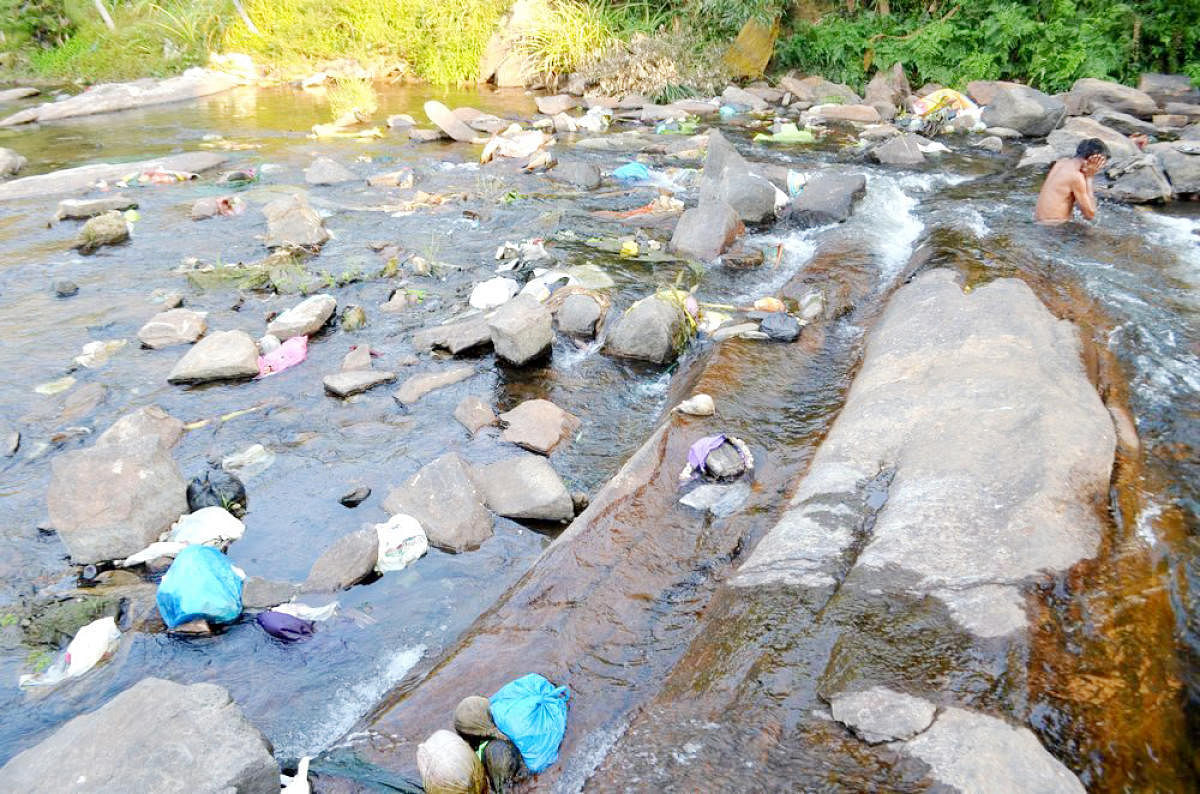
Even as governments, farmers and activists in Karnataka and Tamil Nadu have been fighting for almost a century over the waters of the Cauvery, it is the quantity rather than the quality of this water that has been the focus of their attention. In the process, the quality of the river’s water has deteriorated sharply over the decades, sullied by untreated sewage and industrial effluents. According to a government-funded study conducted by Anna University, the Cauvery carries the most toxins and discharges the least into the sea. The total dissolved solids (TDS) in the Cauvery are an average of around 753 mg per litre, nearly six times that of the Ganga. At some points in Tamil Nadu, such as Erode and Mettur, the TDS level is an alarming 1,450 and 1,750 mg per litre. It seems it is only at Talacauvery that the Cauvery runs clean. The river turns dark and dirty thereafter, with coffee pulping units disgorging their waste into its waters. Although the government has forbidden commercial activity within a radius of 500 metres of the river, dozens of resorts and home-stays have sprung up on its banks as the river winds its way through Kodagu, Mandya and Mysuru. Sewage from cities like Bengaluru and chemical waste from industries have reduced stretches of this river into a sewage canal. However, it is in Tamil Nadu that the Cauvery suffers the worst abuse; waste from textile and dyeing units as well as tanneries have made its waters a deadly cocktail of chemicals and harmful bacteria.
Filthy rivers are not only an unseemly sight but also, they harm human health, livestock and agriculture. An important reason for the Cauvery’s poor water quality is that it gets little attention from the central government. Successive governments in New Delhi have focused on the Ganga. While the prioritisation of the Ganga is understandable to some extent—it is India’s longest and most sacred river, with its basin supporting 40% of India’s population—neglecting other rivers and denying them budgetary allocations is poor policy. Importantly, successive governments in Karnataka and Tamil Nadu have not prioritised the challenge of improving water quality.
Karnataka and Tamil Nadu need to focus attention on the quality of the Cauvery’s water. Involving local communities is necessary for the success of efforts. At present, much of the water flowing in the Cauvery is not useable given its toxic quality. By improving water quality, the two riparian states will be able to increase the availability of clean water. It will require stern action against industries disgorging chemicals into the river. More sewage treatment plants are needed, too.